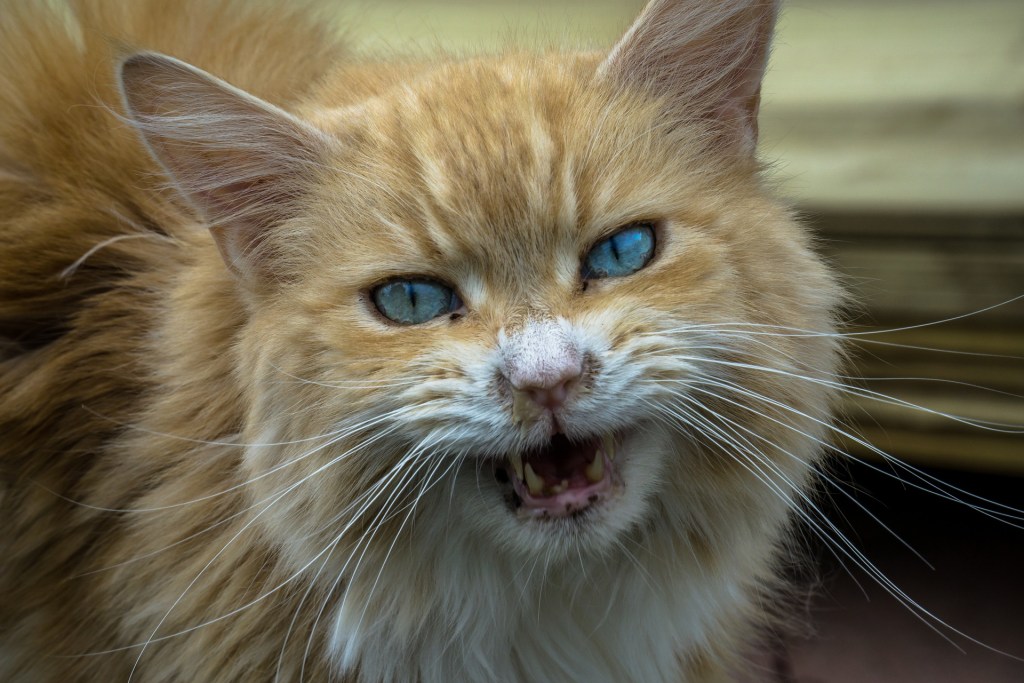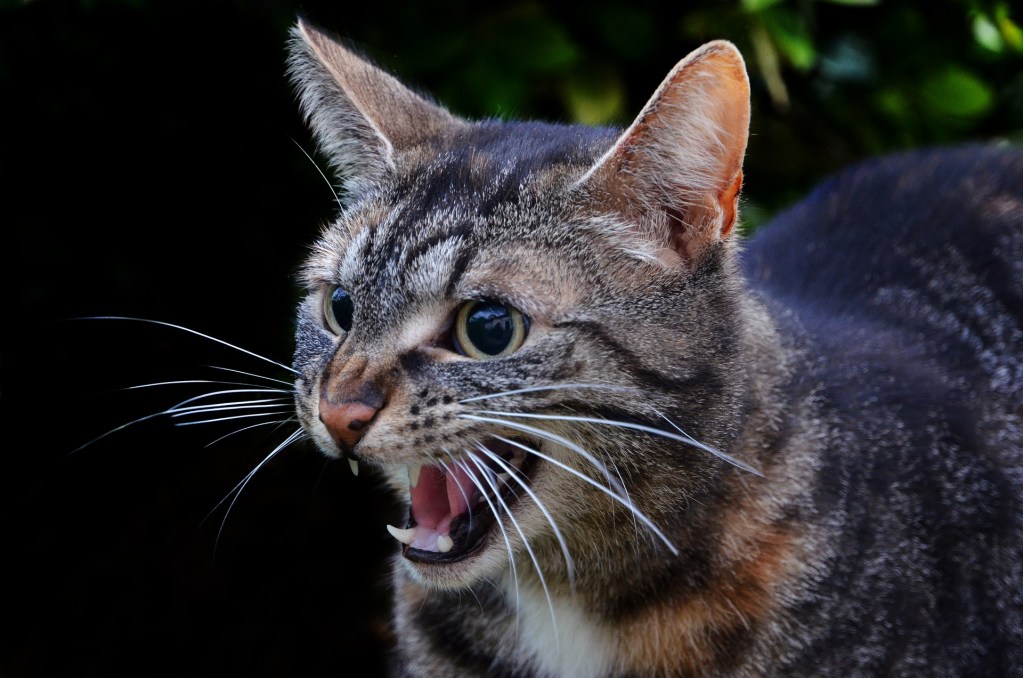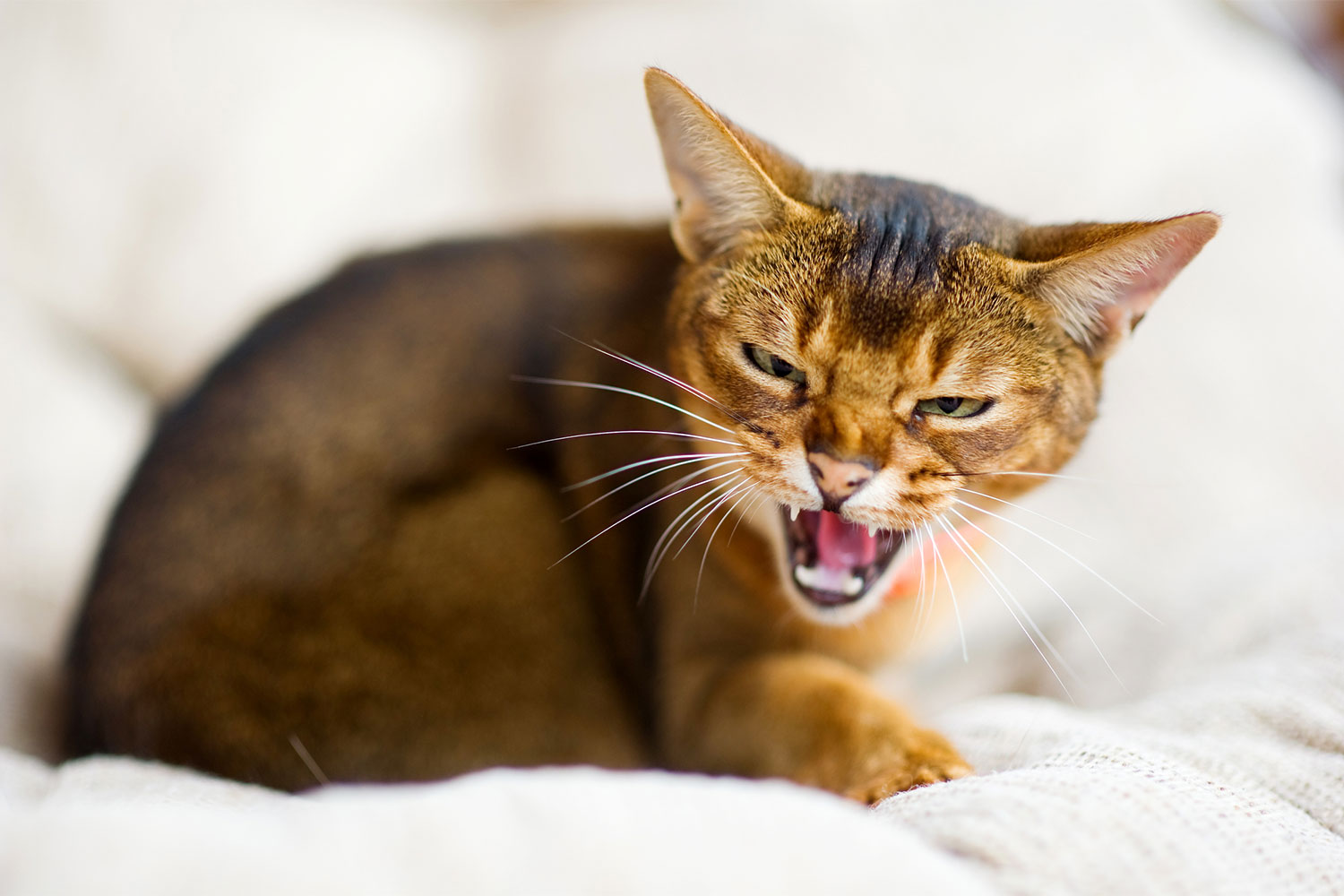Most cats aren’t wildly excited about getting into a cat carrier, but with a little determination and patience, you can safely get them inside. When you’re handling an aggressive cat, the game changes. Aggressive cats can put your safety at risk, and a simple trip to the vet can turn into an epic struggle. But there are some techniques that can help, and with a little preparation, you can make this process easier and less stressful. When you understand how to get an angry cat into a carrier, you can help keep both yourself and the cat safe.

Make sure you’re protected
Before you handle an aggressive cat, it’s important to protect yourself. A pair of heavy-duty cat gloves can help guard your hands and forearms against bites and scratches. Wear these gloves whenever you’re handling an aggressive cat.
While cat gloves help, it’s also essential to consider an aggressive cat’s vaccine history. If you have an indoor cat who’s aggressive, you’ll know that he’s been vaccinated for rabies. If you’re handling an outdoor cat without a verified vaccination history, a bite could put you at risk for any number of diseases. Remember, too, that cat scratches can easily get infected, so take precautions before handling any aggressive cat.

Opt for a trap instead
Before struggling to get a cat into a carrier, decide if he has to be in a cat carrier or whether another sort of cage would be preferable. Using a larger Havahart trap can make getting your cat contained easier and safer for you both.
Havahart traps feature a trigger plate that your cat sets off when he enters the trap. You can encourage him to go in by leaving something scrumptious inside. The trigger plate releases the trapdoor behind him, containing the cat. Once he's safely inside, you don’t have to actually touch the cat, and the trap has a handle so you can pick it up.
You’ll need plenty of patience here — it’s best to leave the trap alone once it’s set. The trap method works best when your cat is already contained within a building or home; leaving the trap set outdoors might mean that you capture wildlife instead. Trapping can be ideal when you’re working with a cat who isn’t vaccinated.

Wrap your cat in a towel
One of the best ways to get a cat into a carrier is to wrap your cat in a towel. By trapping your cat’s legs against his body in the towel, you make it more difficult for him to wriggle away and escape. Some cats may bite because they feel threatened, so be prepared and carefully position your hands and arms.
Once your cat is in the towel, you can place him and the towel into the carrier. This is easiest if you tilt the carrier upward so you can gently slide the cat down through the door. The towel will give you a few seconds to close the carrier door since your cat won’t be able to immediately jump up.

Scruff your cat
If you need to get your cat into a carrier quickly, you might have better luck scruffing him, especially if he swats or bites at you as you try to wrap him in a towel. Picking your cat up by the scruff of his neck makes it more difficult for him to get at you, but always mind your hand placement and hold the cat away from your body.
This technique works best if you have a cat carrier that opens both at the top and side. Have the carrier’s top door open and ready, and try to drop your cat inside quickly. Having a helper available to push your cat’s paws in through the doorway can make this easier.

Teach your cat to associate the carrier with pleasant things
Aggression sometimes results from a cat’s fear of and unfamiliarity with carriers, so some preparation can show an aggressive cat that a carrier isn’t a bad place to be.
Step 1: Feed your cat near the carrier
Start by feeding your cat near the open carrier. You can do the same with some cat treats or even catnip, creating positive associations with the carrier.
Step 2: Move the food inside the carrier
Once your cat is used to eating near the carrier, gradually move his food just inside the carrier door. With time, your cat may become more comfortable going into and out of the carrier on his own.
Step 3: Use feline pheromones
Use feline pheromones in and around the carrier to help soothe your anxious or aggressive cat. This can help reduce your cat’s anxiety around the carrier, and it may help relax your cat just a bit when he’s in the carrier.
Try clicker training
For some cats, clicker training works wonders. This method requires patience and lots of treats.
Step 1: Purchase a clicker and your cat's favorite treats
Start by acquiring lots of treats to have on hand (or be ready to give your cat lots of pets if they aren’t a foodie) and a clicker. You can also use a light or another object that makes a consistent sound.
Step 2: Associate the clicker with a treat
You can do this by clicking the clicker and then immediately after, giving your cat a treat. It will take a number of repetitions before your cat makes the connection between the clicking sound and the treat.
Step 3: Target train your cat
Now you’re ready to target-train your cat by leading him to his carrier and sounding the clicker whenever he goes inside. Make sure to reward your cat with positive reinforcement each time he does the desired behavior. Fun fact: You can also use a clicker to train your cat in obedience or to do tricks.
Getting an aggressive cat into a carrier requires additional preparation and care. It can be dangerous for both you and the cat, so be sure you’ve got the equipment and knowledge that you need. If at all possible, always have a helper since an extra pair of (gloved) hands can make this process easier. You may need to experiment with different techniques to determine which works best. With a thorough understanding of how to put a cat into a carrier, you can make the ordeal as safe and low-stress as possible.



